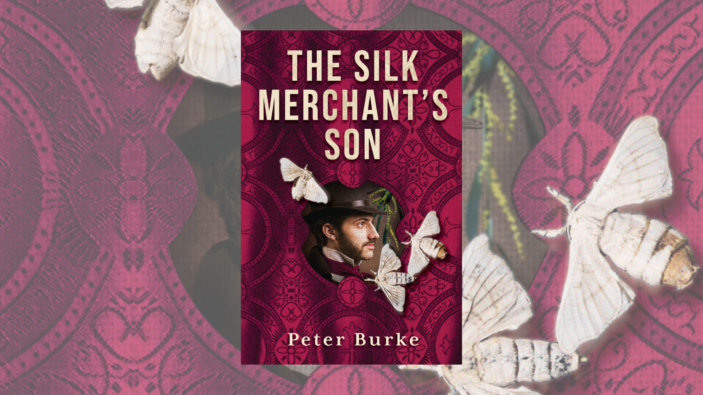
The Silk Merchant’s Son isn’t Peter Burke‘s first foray into writing historical fiction based on the stories West Aussies think they know. His first novel, The Drowning Dream, was shortlisted for the Australian/Vogel’s Literary Award in 1996, and was a mystery set against the backdrop of the Broome pearling industry circa the 1920s. His second novel, Wettening Auralia, followed the life (and death) of C.Y. O’Connor.
In The Silk Merchant’s Son, Burke has his fictional protagonist, Fabrice Cleriquot, accompany the ‘misguided missionaries’ who travelled to Western Australia in the hopes of converting thousands of indigenous people to Catholicism in 1845. Cleriquot, a fictional professor of linguistics and son of a wealthy silk merchant, is tasked with managing a sizeable purse of money that has been donated to the cause, lest it should be wasted by the ostensible leader of the expedition, the Bishop of Perth John Brady. Also along for the journey are the likes of Dom Jose Salvado and Sister Ursula Frayne, whose names may be familiar to Perth-based readers if only for the landmarks who share them.
Burke writes his historical fiction in the style of narrative non fiction, allowing him to weave considerable research and analysis into his tale. While he must balance the fates of a large cast of characters, he picks out one or two with whom the reader can develop a relationship, not least among them being Fabrice. Fabrice has been sent on the mission by his father as a means of distracting him from an unsuitable relationship with another man from his university. He is not religious and views himself as a humanist; though his relationships with the other members of the expedition do allow him to question the nature of faith and the role it may play in his own life (and thus allowing Burke and the reader to have a similar conversation.)
Fabrice, as observer, also functions to question the actions of the party towards the local First Nations people in the settlements where they are sent. There are a number of heartbreaking scenes in which children are ‘adopted’ or ‘rescued’ by one of the monks and sent back to the Sisters of Mercy to raise, or taken across the ocean to meet the Pope. Fabrice probes the supposed kindness that the missionaries think that they are bestowing, providing a critique on atrocities of the time.
As a professor of linguistics, Fabrice also considers the nature of communication between the newcomers (among them being Irish, Spanish, English and French speakers) and the Indigenous people of Australia. He learns to speak in the dialects of those he meets quickly, although often unintentionally transposing words into French spellings and pronunciations.
While the style of this book may prove to be a little detached for some (as we are often at a remove from the feelings of the characters, while knowing much about their thoughts), The Silk Merchant’s Son is ultimately a thought-provoking and extremely readable novel about what would be a lesser-known aspect of WA history. The detail included in evoking the setting alone make it worth reading.
FOUR STARS (OUT OF FIVE)
Peter Burke’s The Silk Merchant’s Son is available now from Fremantle Press. Grab yourself a copy from Booktopia HERE.
